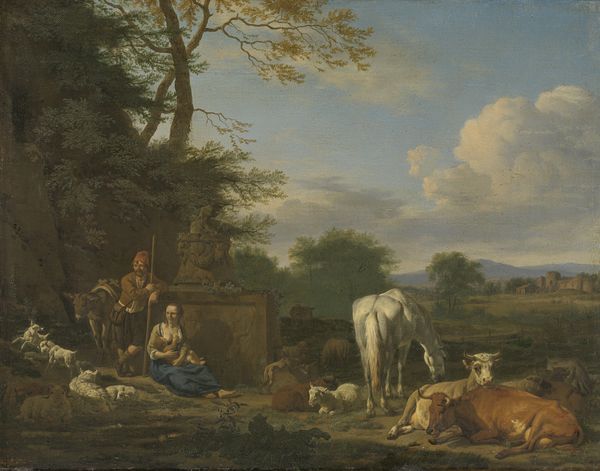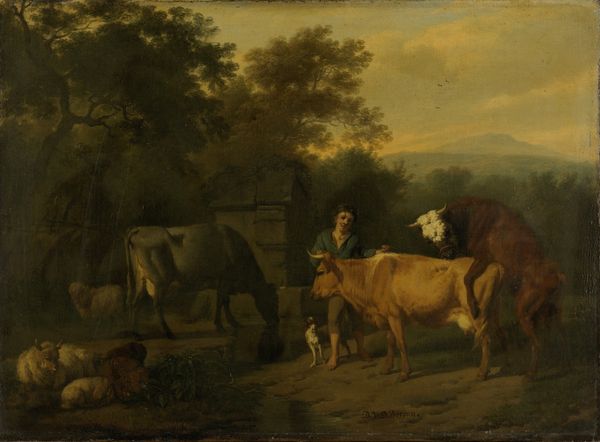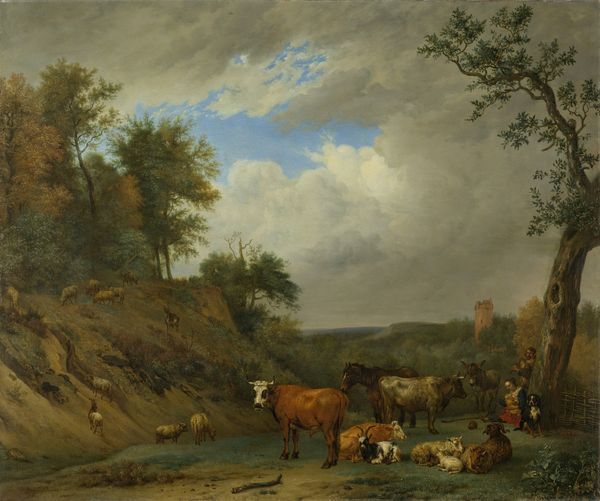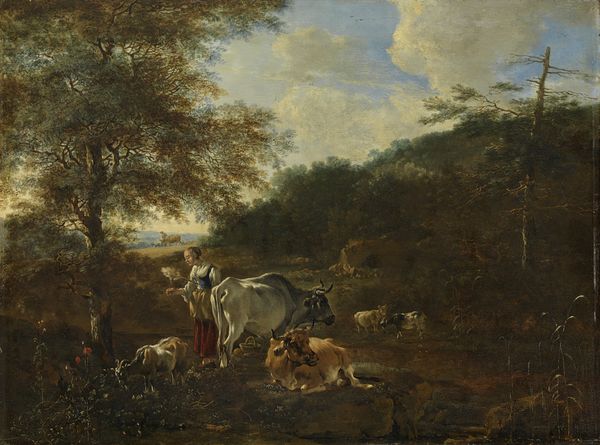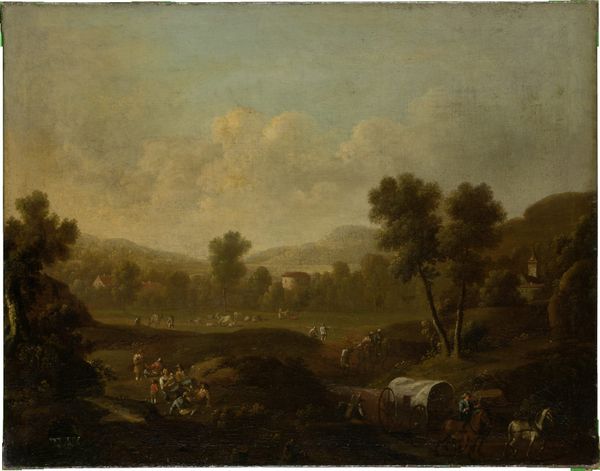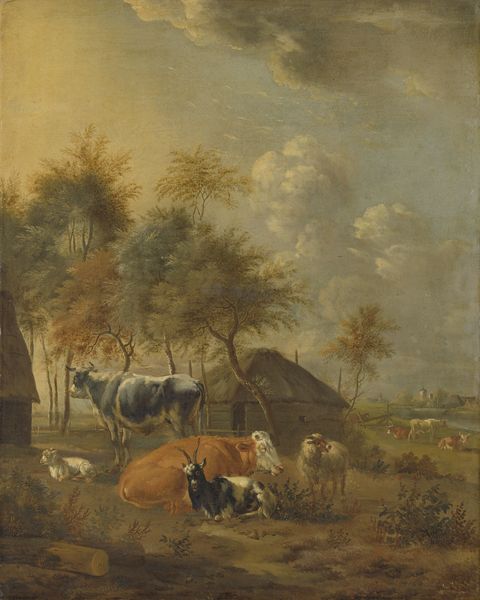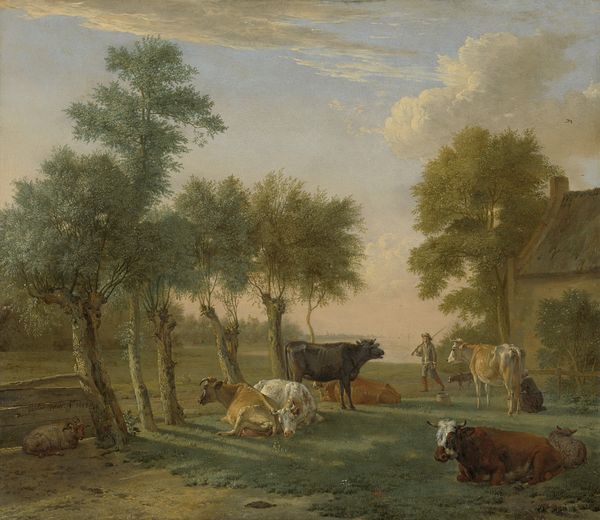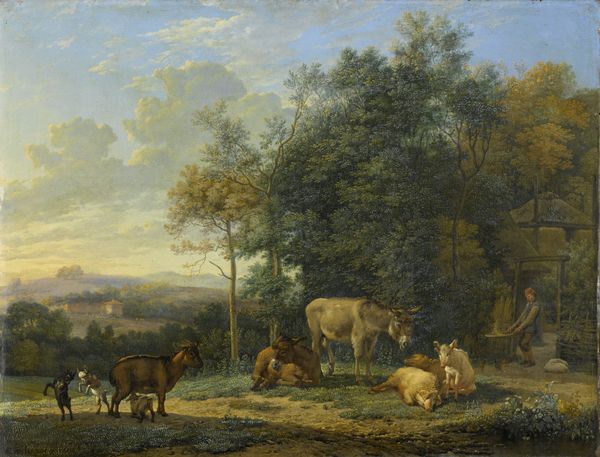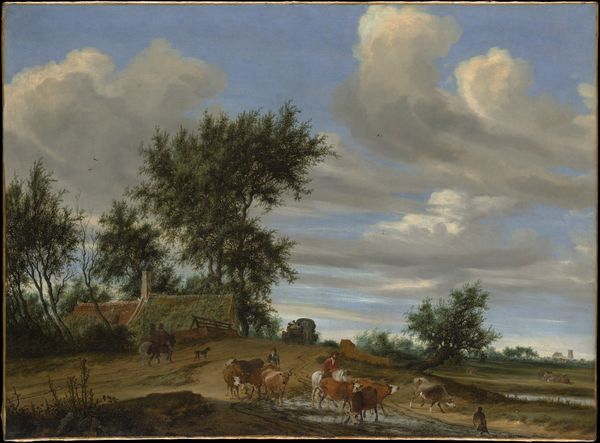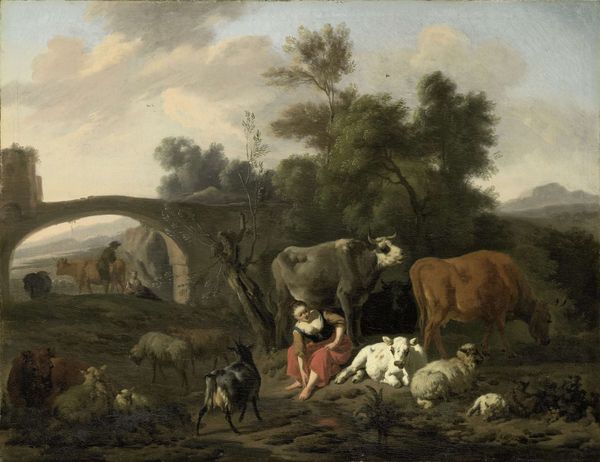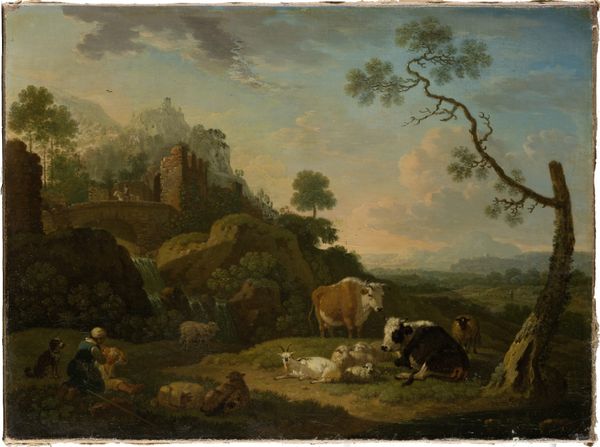
painting, oil-paint
#
dutch-golden-age
#
painting
#
oil-paint
#
landscape
#
figuration
#
oil painting
#
genre-painting
#
realism
Dimensions: 31 cm (height) x 41 cm (width) (Netto)
Editor: This is Adriaen van de Velde's "Shepherdess with Cattle," painted between 1651 and 1672, using oil paints. It’s held at the SMK in Copenhagen. It’s interesting how he frames this rural scene, but it also feels... staged, almost artificial. What's your perspective on this work? Curator: It's fascinating to consider how these seemingly simple pastoral scenes reflect broader social anxieties and power dynamics of the Dutch Golden Age. Van de Velde, like many of his contemporaries, was painting for an urban elite who were increasingly detached from the realities of rural life, even romanticizing it. Do you notice the Shepherdess herself? Editor: Yes, she looks very relaxed, almost pensive, leaning against one of the cows. Curator: Precisely. And how does that composure, her almost stylized presence, sit with the labour we might associate with such a figure? The painting might, then, not only show us a shepherdess, but ask deeper questions of rural life as commodity, don't you think? Editor: That’s a great point, and not something I'd considered. I was so caught up in trying to assess the composition that I didn't think about it more deeply. Curator: Consider also that the Dutch Golden Age was built on colonial exploitation, on global trade in things like spices and textiles – elements often missing from these idyllic scenes. Doesn’t this absence force us to consider the hidden narratives within them? It asks the questions, whose idyllic landscape is it really, and at what cost? Editor: Definitely gives a new perspective on pastoral art in general. It really underscores the constructed nature of these scenes and how they were being consumed at the time. I'll never look at cows the same way! Curator: That is how we can reclaim them through the context of the time in history that defined them.
Comments
No comments
Be the first to comment and join the conversation on the ultimate creative platform.
